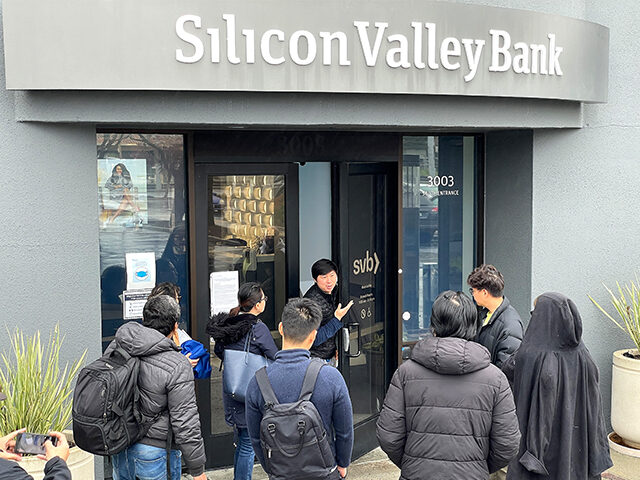A Run on Silicon Valley Bank
The sudden implosion of Silicon Valley Bank (SVB) is sending shock waves through the financial system and the technology sector.
SVB plays a central role in the start-up economy of San Francisco. According to Bloomberg, it does business with about half of venture capital backed start-up firms in the U.S.
Venture capitalists this week began advising their portfolio companies to “diversify” away from SVB, according to multiple reports. So, what we are seeing looks a lot like a classic bank run. No fractional reserve bank can withstand a bank run.
On Friday, the California Department of Financial Protection and Innovation said it was shuttering the bank. The Federal Deposit Insurance Corporation (FDIC) said that all insured depositors will have full access to their insured deposits, but that might not be as reassuring as it sounds. Bloomberg reports that more than 93 percent of SVB deposits are uninsured.
The Labor Market Remains Very Hot
The Department of Labor said on Friday that the economy added 311,000 jobs in February, a blistering pace of job creation that is at odds with the Federal Reserve’s attempt to to cool down demand for labor. This is likely enough to ensure that the Federal Reserve hikes the federal funds rate by 50 basis points at the next meeting.
The consensus forecast was for around 225,000 jobs added to U.S. payrolls. This marks the eleventh consecutive month of payrolls topping estimates. According to Bloomberg, the median forecast in each survey of economists fell short of the government’s initial estimate of payrolls by an average of 100,000 a month since April.
The prior month’s estimate was revised down to 504,000 from 517,000—not anywhere near enough to change the narrative of the super hot jobs market. Private payrolls climbed by 265,000, above the forecast for 215,000.
To put that in perspective, the economy needs to add somewhere between 75,000 and 100,000 jobs to keep up with population growth.
Good News on Labor Force Participation
The labor force participation rate climbed from 62.4 percent to 62.5 percent, which helped push the unemployment rate up from 3.4 percent to 3.6 percent. Increasing the number of people looking to work is a positive development for the economy and puts downward pressure on inflation.

COMMENTS
Please let us know if you're having issues with commenting.